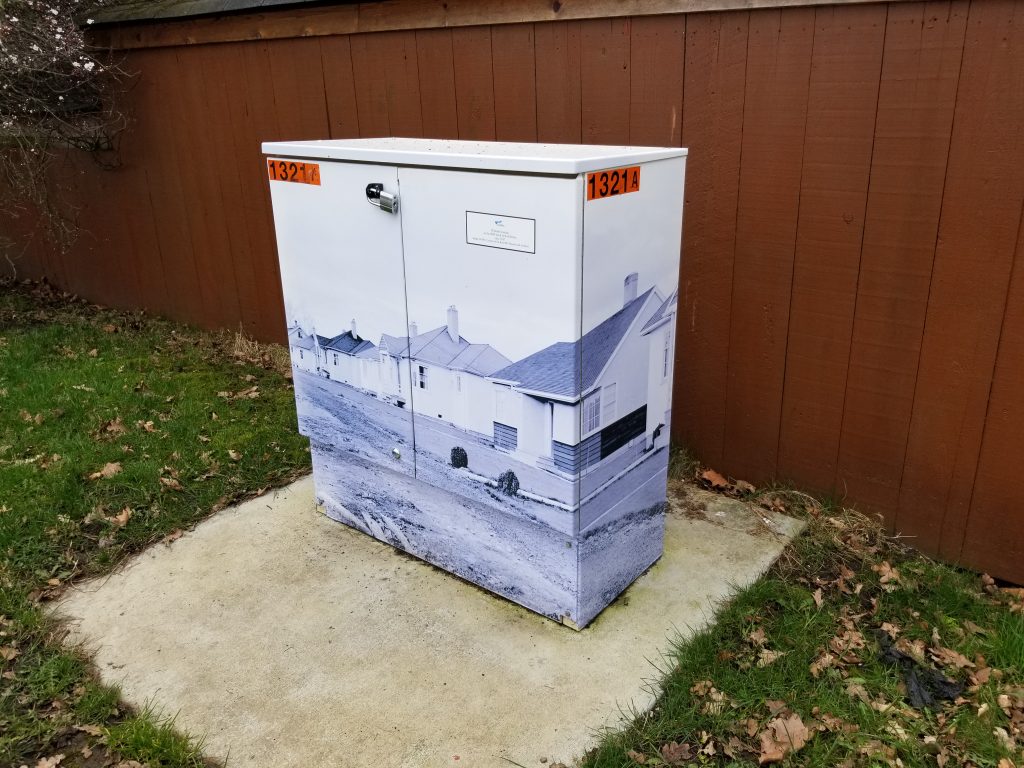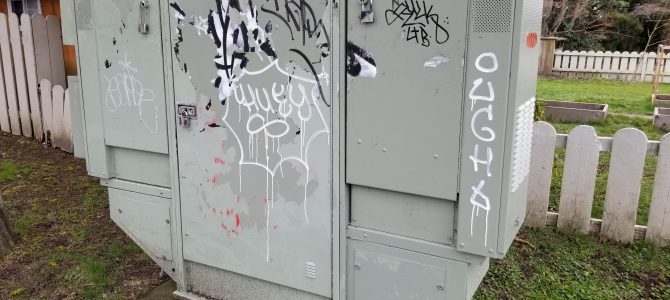Sometimes when I’m out on my daily walk, I find hopscotch boxes or messages drawn in chalk on the sidewalk that make me smile. In the first few weeks and months of COVID-19, there were a lot of messages, especially positive and encouraging ones. Sometimes you’d even find goofy Dad jokes. It was graffiti of the best kind.
Graffiti has been around for thousands of years, discovered on the walls of caves, in ancient Egypt and Greece and the Roman Empire. Most of it was in the form of etched inscriptions or figure drawings. In fact, the word “graffiti” comes from the Italian word “graffiato” which means “scratched”. The things you learn, eh?
Although it was also found in abandoned buildings and bombed out areas in Europe during World War II, what we think of as graffiti today was mostly born out of popular culture and the political movements of the 1960’s and 70’s.
It is not necessarily the same as street art, but the word “graffiti” is often used for both. These days, graffiti is usually word-based, where as street art is image-based. There have been wars between some street artists and graffiti artists for years, especially because street art has been accepted and even invited in certain sections of cities and towns. In most places, however, graffiti and street art are both still illegal. Some of you will recognize the name Banksy, a very famous, British-based street artist whose real identity remains unconfirmed. If you’ve never seen his documentary “Exit Through The Gift Shop”, I highly recommend it.
In and around my neighbourhood, graffiti of the not-so-great kind seems to have become more abundant lately. Tagging, which is more of a way of marking territory, is especially noticeable.
I really don’t like it. I mean, I get it. Freedom of expression and all that. But to me, it’s just plain ugly.
Tags show up on walls, street signs, utility boxes, on buses, fences and pretty much any blank surface outdoors. The tags themselves mean nothing to most of us, only to the small community of people who do it. And the illegality of it doesn’t seem to phase the taggers.
Spray paint has been their medium of choice for many years because of its portability and permanence. It is a pain in the butt to clean because it’s mainly oil-based, so painting over the graffiti is often the only way to clean it up. I’ve seen the same wall of one corner store graffitied and tagged, then painted over and repaired time and time again. It has become some sort of “game of tag”. As soon as the mess is cleaned, they’re at it again.
At one time, Canada Post boxes were one of the blank surfaces constantly targeted by taggers. But you may have noticed in the last few years that mailboxes are now plastered with a jumble of postal codes on all sides, meant to make tagging less visible. Not only that, but the postal codes are actually on an adhesive, which can be peeled off and replaced if it gets too messy. Very clever!
Utility boxes have also been a tagger temptation. But the City of Victoria has started “wrapping” these blank boxes with photos and other scenes to discourage graffiti. Box wraps have also made an appearance in the Burnside/Gorge area, with the Burnside Gorge Community Centre inviting members of the public to come up with designs for utility boxes there. I’m sure this idea will soon become commonplace in most communities.

Not only are the box wraps nicer than graffiti, they are also interesting. The photo on the utility box above is the 2800 Block of Scott Street here in Victoria, circa 1947, with its brand new wartime homes. A lot of those old homes are still standing!

In my neighbourhood, the wall of one small block of retail stores is now painted with a colourful mural depicting “What Makes A Community”. A group of neighbours started painting it last summer and it is now complete. So far, the taggers have left it alone.
And so it seems that one way to beat them at their own game is to simply be a step ahead of them.
Nothing is going to completely stop taggers from defacing property. In a perfect world, they would have a place where they can legally make their mark, and stay away from everything else. But I think taggers are far more rebellious than that.
Maybe we can convince them to try chalk?


